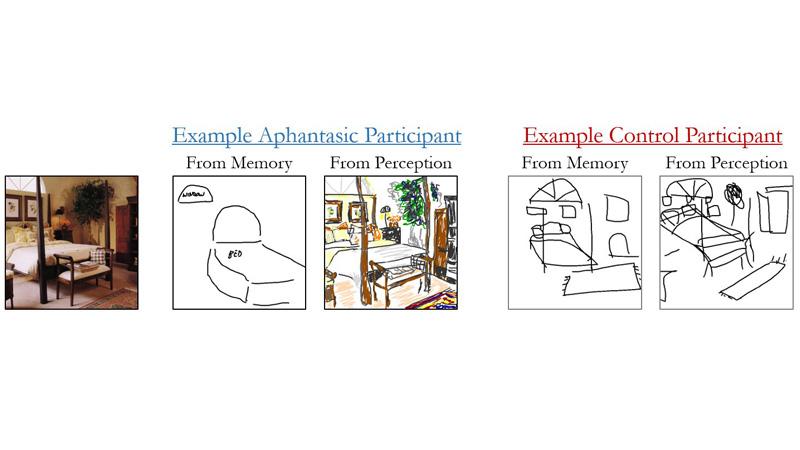Researchers from the University of Westminster, University of Chicago and National Institute of Mental Health have found differences in the type of details provided in memory drawings of real-world scenes in individuals with a lack of visual mental imagery compared to those with typical imagery.

When an individual is asked to form an image of a person they are familiar with, or to think about their home, most people would respond they can ‘see it’ within their mind’s eye. However, a newly-identified variation of human experience characterised by a life-long inability to generate visual imagery called aphantasia means that many cannot see any imagery in their mind’s eye, and is thought to be experienced by 2-5% of the population.
To further explore this new phenomenon, the study attempted to measure differences in visual memory between individuals with aphantasia and those with typical imagery, and explore through drawing the differences between memory for object details such as the colour of objects and spatial details such as the size and location of the objects. Participants were recruited from online forums where people with aphantasia had shared their experience in order to secure a large sample size of 61 aphantasic participants and 52 control participants with typical imagery.
Participants were shown three images of a living room, a kitchen and a bedroom, and were asked to draw each from memory. Each of the participants was then asked to identify the three images within a short stream of other images, and then drew them while the image remained present as a reference. All drawings were reviewed by over 2,700 online scorers who objectively measured the object details and the spatial details provided in each drawing.
Findings from the study showed that memory drawings of aphantasic participants contained fewer objects and fewer object details, such as the use of colour, compared to individuals with typical imagery who drew more objects and used more colour in their drawings. Aphantasic participants also used more written labels or descriptions in their drawings such as writing the words ‘bed’ or ‘chair’, rather than drawing the respective object, suggesting that aphantasic participants could be using alternative strategies such as verbal representations or code rather than visual memory.
Despite the differences in object detail, the location and size of objects in the drawings made by aphantasic participants were as accurate as those from participants with typical imagery. Additionally, though aphantasic participants drew fewer objects, they also made fewer mistakes. Drawings from those with typical imagery included 14 false objects (or false memories) across all memory drawings, while aphantasic participants drew three false objects. The false objects drawn by the aphantasic participants featured in other rooms rather than being novel objects, but were drawn in spatially accurate locations.
When participants were asked to copy the reference image, there were no differences in object or spatial details drawn by both groups, suggesting that the differences in memory drawings were not due to differences in artistic ability or drawing effort. There were also no differences identified in visual recognition between the two groups.
The research was devised by Dr Wilma Bainbridge, Assistant Professor of Psychology at the University of Chicago and Zoe Pounder from the University of Westminster, in collaboration with Dr Alison Eardley from the University of Westminster, and Dr Chris Baker from the National Institute of Mental Health.
Talking about the research, Zoe Pounder, Doctoral Researcher from the University of Westminster, said: “This is one of the largest aphantasia behavioural studies which has explored the nature of aphantasics’ mental representations for visual images, with 61 aphantasic individuals participating in the study. These results provide evidence for a selective object imagery deficit experienced by individuals with aphantasia and importantly further validates aphantasia as an experience experimentally beyond self-reports measures.”
Dr Alison Eardley, Senior Lecturer in the Department of Psychology, added: “Resulting from Zoe and Wilma’s chance meeting at the 2018 VSS conference in Florida, this research is an excellent example of why it is so important that Doctoral researchers are able to be funded to attend conferences. I was delighted to be invited to be involved in this collaboration, which has drawn on a really innovative methodology to provide some important insights into the nature of aphantasia.”
Read the full study on the ScienceDirect website.


